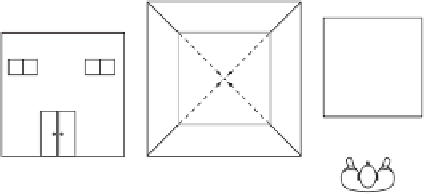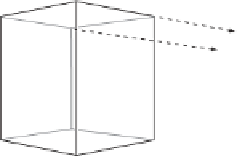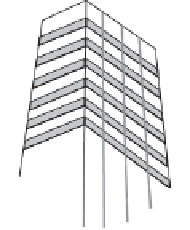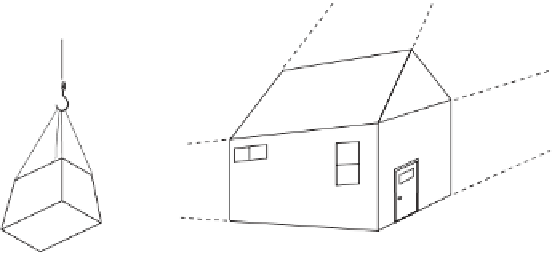Graphics Programs Reference
In-Depth Information
Back
Front
Roof
Back
Front
(a)
(b)
(c)
(d)
Figure 3.5: Vanishing Points.
Figure 3.6 shows examples of perspective with three vanishing points. Imagine a
person standing in front of a corner of a skyscraper, craning his neck in an attempt to
see all the way to the top of the building. Because of the height of the building, its top
seems smaller than its bottom, so the straight, parallel lines connecting top to bottom
also seem to converge to a vanishing point. Even a small object, such as a cube, can
feature three vanishing points if it is hoisted up and we are positioned under it. Even a
small, one-story house can feature three vanishing points if it has a traditional pitched
roof.
Figure 3.6: Three Vanishing Points.
We live in a three-dimensional world, which is why we can visualize objects with
one, two, or three dimensions, but not more. A line or a curve has one dimension. A
flat plane or a curved surface is two-dimensional. A solid object has three dimensions,
so the question is, can an object feature more than three vanishing points? The answer,
which may come as a surprise to some, is yes, as illustrated by Figures C.1 (page 232)
and 3.7. Everyday objects, such as a chest of drawers (if you have messed yours up in
order to prove my point, please take the time to put it back in order) and a circular
staircase, can feature any number of vanishing points.
Exercise 3.2:
Come up with other common objects or scenes that feature many van-
ishing points.


























Search WWH ::

Custom Search